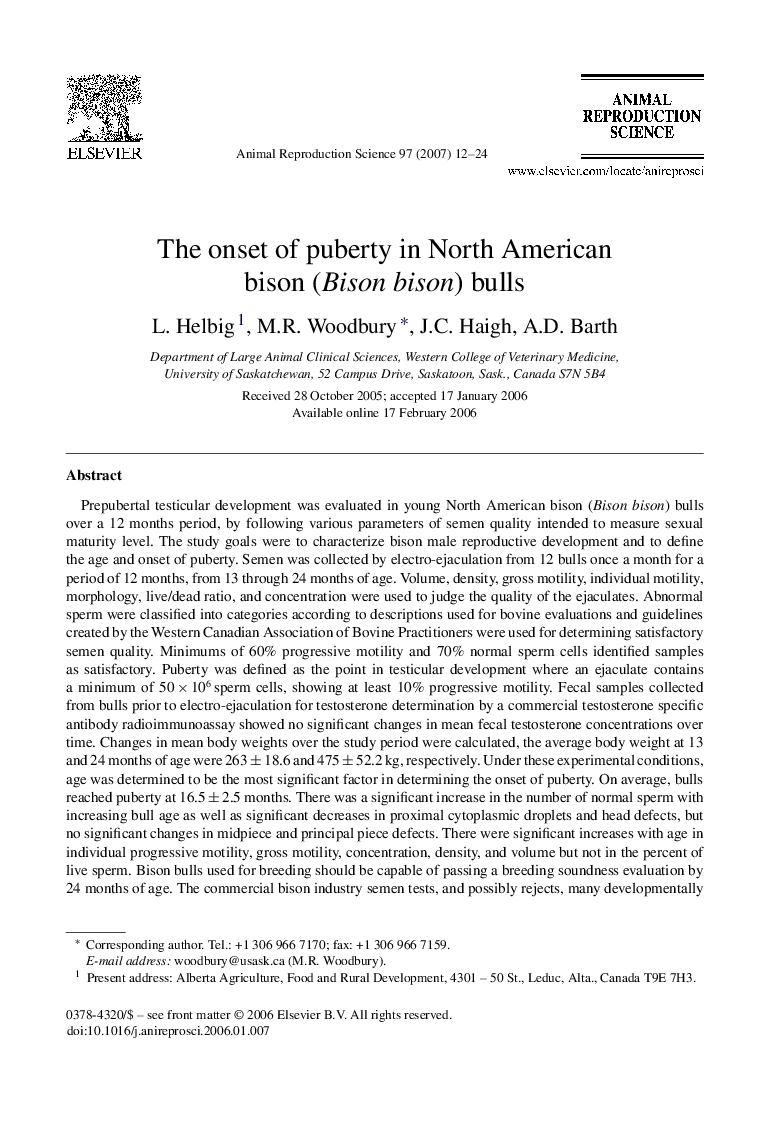| Article ID | Journal | Published Year | Pages | File Type |
|---|---|---|---|---|
| 2075193 | Animal Reproduction Science | 2007 | 13 Pages |
Prepubertal testicular development was evaluated in young North American bison (Bison bison) bulls over a 12 months period, by following various parameters of semen quality intended to measure sexual maturity level. The study goals were to characterize bison male reproductive development and to define the age and onset of puberty. Semen was collected by electro-ejaculation from 12 bulls once a month for a period of 12 months, from 13 through 24 months of age. Volume, density, gross motility, individual motility, morphology, live/dead ratio, and concentration were used to judge the quality of the ejaculates. Abnormal sperm were classified into categories according to descriptions used for bovine evaluations and guidelines created by the Western Canadian Association of Bovine Practitioners were used for determining satisfactory semen quality. Minimums of 60% progressive motility and 70% normal sperm cells identified samples as satisfactory. Puberty was defined as the point in testicular development where an ejaculate contains a minimum of 50 × 106 sperm cells, showing at least 10% progressive motility. Fecal samples collected from bulls prior to electro-ejaculation for testosterone determination by a commercial testosterone specific antibody radioimmunoassay showed no significant changes in mean fecal testosterone concentrations over time. Changes in mean body weights over the study period were calculated, the average body weight at 13 and 24 months of age were 263 ± 18.6 and 475 ± 52.2 kg, respectively. Under these experimental conditions, age was determined to be the most significant factor in determining the onset of puberty. On average, bulls reached puberty at 16.5 ± 2.5 months. There was a significant increase in the number of normal sperm with increasing bull age as well as significant decreases in proximal cytoplasmic droplets and head defects, but no significant changes in midpiece and principal piece defects. There were significant increases with age in individual progressive motility, gross motility, concentration, density, and volume but not in the percent of live sperm. Bison bulls used for breeding should be capable of passing a breeding soundness evaluation by 24 months of age. The commercial bison industry semen tests, and possibly rejects, many developmentally incomplete bulls between 19 and 21 months of age. We suggest that these may actually be developing normally and should not be hastily discarded; it may be worth testing again at 24 months.
